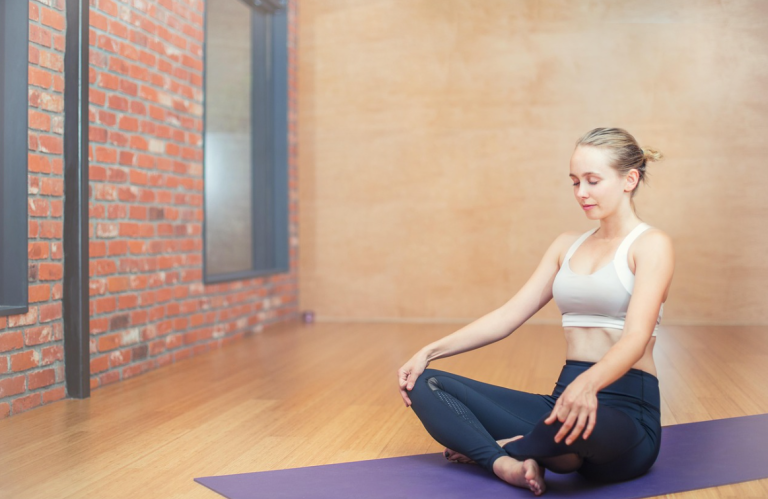
Introduction: Why Mindfulness Matters for Busy People
In today’s fast-paced world, being busy is often seen as a badge of honor. We juggle work, social commitments, and family responsibilities, leaving little room for self-care. However, the constant busyness can take a toll on our mental and physical health, leading to stress, anxiety, and burnout. That’s where mindfulness comes in.
Mindfulness isn’t just about sitting still for long hours meditating. It’s a practice that can fit seamlessly into any lifestyle, even the busiest ones. By focusing on the present moment and letting go of distractions, mindfulness helps reduce stress and promotes mental clarity. If you’re wondering how you can incorporate mindfulness into your busy schedule, keep reading for some simple, practical techniques.
The Science Behind Mindfulness
How Mindfulness Affects the Brain
Mindfulness has a profound effect on the brain, especially in areas that control emotions, stress, and focus. Studies have shown that regular mindfulness practice can increase the thickness of the prefrontal cortex, the part of the brain responsible for higher cognitive functions such as decision-making and self-control. At the same time, mindfulness can reduce activity in the amygdala, which is responsible for processing fear and stress.
The Impact of Mindfulness on Stress Levels
Research has demonstrated that mindfulness can significantly lower cortisol levels, the hormone most associated with stress. By practicing mindfulness, people report feeling less overwhelmed and more capable of handling stress. It’s not about eliminating stress completely but learning how to respond to it in a healthier way.
Common Misconceptions About Mindfulness
Mindfulness Is Not Just Meditation
One common misconception is that mindfulness equals meditation, but that’s only part of the story. While meditation is a powerful tool for cultivating mindfulness, the essence of mindfulness is being fully present and aware of your thoughts, feelings, and surroundings. You can practice mindfulness in everyday activities, like drinking coffee, listening to music, or walking.
You Don’t Need Hours of Free Time
Another misconception is that mindfulness requires a significant time commitment. In reality, you can practice mindfulness in just a few minutes. Whether it’s a quick breathing exercise or a few moments of focused awareness during a commute, mindfulness doesn’t have to take up hours of your day.
Practical Mindfulness Techniques for Busy People
Mindful Breathing: A Quick Stress Reliever
One of the simplest mindfulness techniques is mindful breathing. All you need is a few moments of quiet to focus on your breath. Inhale slowly, hold for a few seconds, then exhale. This practice calms the nervous system and helps clear your mind, making it perfect for a quick stress-relieving break.
Mindful Walking: A Simple Daily Practice
If you find it hard to sit still, try mindful walking. This doesn’t require a special environment or a lot of time. You can practice mindfulness while walking to your car, going to the bathroom, or even walking in between meetings. The key is to pay attention to each step, your body’s movements, and your surroundings.
Body Scan: Relaxing in Minutes
The body scan is a great way to release tension in your body and ground yourself in the present moment. It involves mentally scanning each part of your body from head to toe, paying attention to any areas of tension or discomfort. This practice can be done in just a few minutes, making it ideal for a quick reset during a busy day.
How to Do a Simple Body Scan
To practice a body scan:
- Sit or lie down in a quiet space.
- Close your eyes and take a few deep breaths.
- Start by focusing on your toes, noticing any sensations or tightness.
- Gradually move up your body, focusing on each part (feet, legs, stomach, chest, arms, neck, head).
- With each part, notice any tension and try to release it with your breath.
Mindful Eating: Bringing Awareness to Meals
In our busy lives, we often eat on autopilot. Mindful eating involves slowing down and savoring each bite, paying attention to the flavors, textures, and smells of your food. By eating mindfully, you not only reduce stress but also improve digestion and satisfaction with your meals.
Integrating Mindfulness Into Your Daily Routine
Mindfulness at Work: How to Stay Present Amidst Chaos
Work can be one of the most stressful environments, especially when deadlines are tight and meetings are back-to-back. But mindfulness can help you stay calm and focused. Take a few moments between tasks to breathe deeply or close your eyes and center yourself. This helps you reset and approach the next task with a clear, calm mind.
Mindfulness in Your Commute: Using Travel Time Wisely
Commuting can be a source of frustration, but it’s also an opportunity to practice mindfulness. Whether you’re driving, walking, or taking public transportation, use your commute as a time to check in with yourself. Practice mindful breathing or observe your surroundings without judgment. This helps reduce stress and prepares you for the day ahead.
Mindfulness Before Bed: A Relaxing Evening Ritual
The end of the day is the perfect time to practice mindfulness, especially if you find it difficult to unwind. A simple breathing exercise or body scan can help you relax and prepare for a restful night’s sleep. By incorporating mindfulness into your bedtime routine, you can improve sleep quality and reduce insomnia.

The Benefits of Practicing Mindfulness
Reducing Anxiety and Stress
Mindfulness is a powerful tool for managing anxiety and stress. By staying present and observing your thoughts without judgment, you can break the cycle of overthinking and rumination that often leads to anxiety. This shift in perspective helps lower stress levels and creates a sense of peace.
Enhancing Focus and Productivity
Far from being a distraction, mindfulness actually enhances focus and productivity. By training your mind to stay present, you become better at managing tasks and making decisions. You’re also less likely to be distracted by irrelevant thoughts, allowing you to concentrate more fully on the task at hand.
Conclusion: Finding Peace in the Midst of Busyness
Mindfulness isn’t just for people with plenty of free time—it’s a tool that busy individuals can use to manage stress, stay present, and improve overall well-being. By incorporating simple practices like mindful breathing, walking, and eating into your daily routine, you can create pockets of calm throughout your day. In the end, mindfulness helps you navigate the busyness of life with greater clarity and peace.

FAQs
1. Can I practice mindfulness if I’m always busy?
Yes! Mindfulness can be practiced in just a few minutes, making it perfect for busy schedules. Even small moments of mindful breathing or awareness can make a big difference.
2. Do I need to meditate for hours to feel the benefits of mindfulness?
No, you don’t need hours of meditation. Short sessions of mindfulness, whether through breathing exercises or body scans, can still provide significant benefits.
3. How quickly can I start seeing results from mindfulness?
Many people begin noticing the benefits of mindfulness after just a few sessions. However, consistent practice over time leads to deeper benefits, including reduced stress and improved focus.
4. Is mindfulness the same as meditation?
While meditation is one form of mindfulness, mindfulness itself is about being present in the moment. You can practice mindfulness in everyday activities, not just while meditating.
5. How do I stick to a mindfulness practice when I’m constantly on the go?
Start small—integrate mindfulness into your daily routine in bite-sized moments. Practice mindful breathing while waiting for coffee or mindful walking during your commute. Gradually, it will become a natural part of your day.





